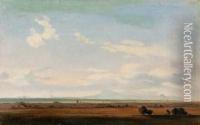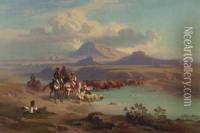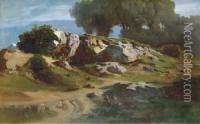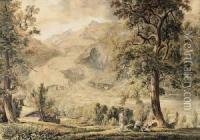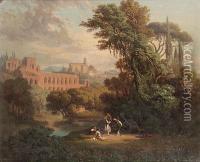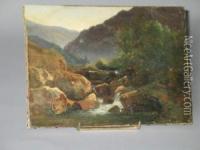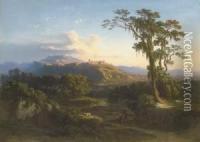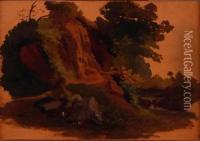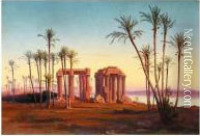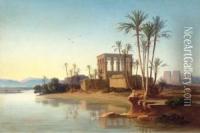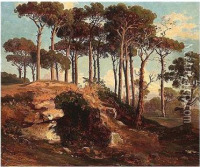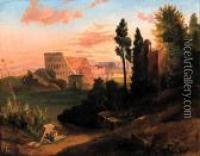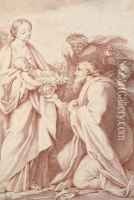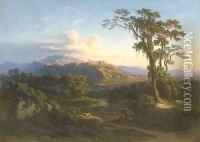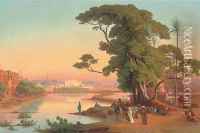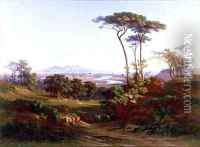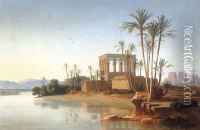Johann Jakob Frey Paintings
Johann Jakob Frey, born on February 26, 1813, in Basel, Switzerland, was a Swiss painter and engraver known for his landscape works that captured the essence of the Italian countryside, particularly the area around Rome.
Frey's initial artistic training took place in his hometown of Basel, where he learned the fundamentals of drawing and painting. In search of greater artistic development, Frey moved to Munich in 1831, where he continued his studies and began to establish his reputation as an artist. It was, however, his relocation to Rome in 1833 that marked a pivotal point in his career. Rome's classical ruins, its light, and the surrounding Campagna became his primary subjects.
Frey quickly integrated into the circle of artists residing in Rome, which at the time included members of the German Romantic movement such as Joseph Anton Koch. Under the influence of these artists, Frey began to cultivate a style that blended romantic sensibilities with meticulous detail, a characteristic that would come to define his work.
Throughout the 1830s and 1840s, Frey travelled extensively within Italy, capturing the picturesque landscapes and the interplay of light and shadow. His works from this period exhibit a strong sense of atmosphere and often include small figures to give a sense of scale and narrative to the vast natural settings.
In 1850, Frey returned to Basel and became a member of the Basel Art Society. Despite his return to Switzerland, the Italian landscape continued to dominate his oeuvre. Frey's paintings were exhibited in various European cities, garnering acclaim and contributing to the popularity of Italianate landscapes among collectors and the broader public.
Frey's artistic output also included engravings, which allowed his works to reach a wider audience. His engravings were noted for their fine detail and clarity, traits that reflected his painterly approach.
Johann Jakob Frey passed away on July 29, 1865, in Freiburg im Breisgau, Germany. His legacy is preserved through his evocative landscapes that continue to be appreciated for their romantic yet precise depictions of the Italian scenery. His work is housed in various collections and museums, offering glimpses into the 19th-century European art world's fascination with Italy's enduring beauty.

